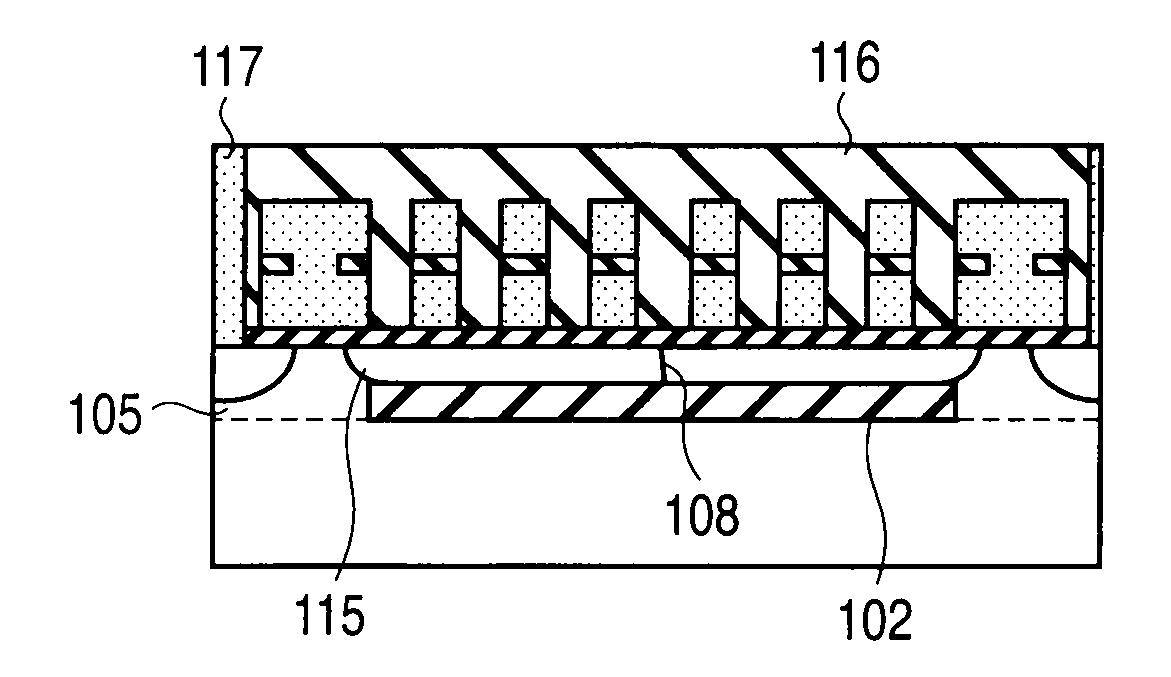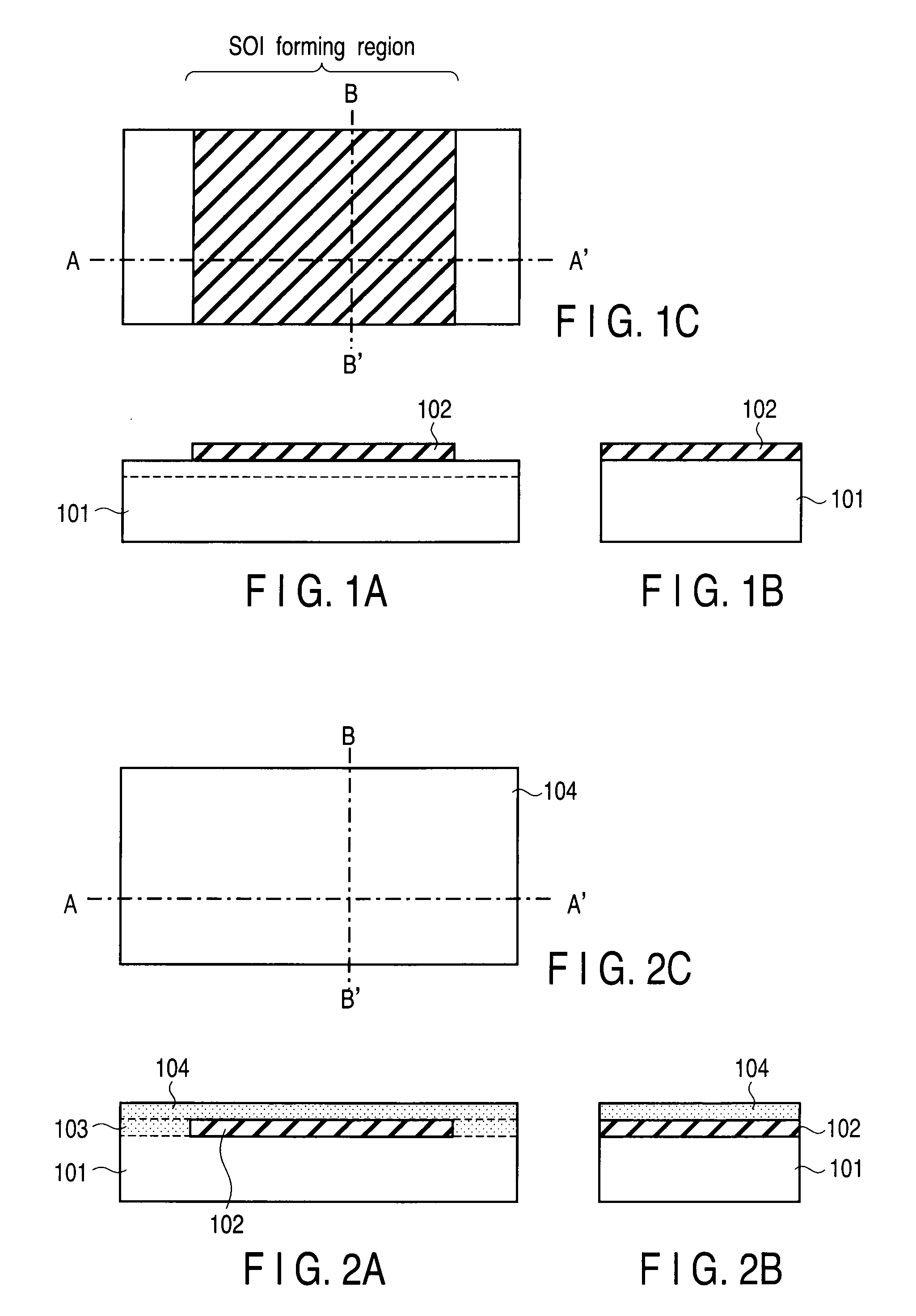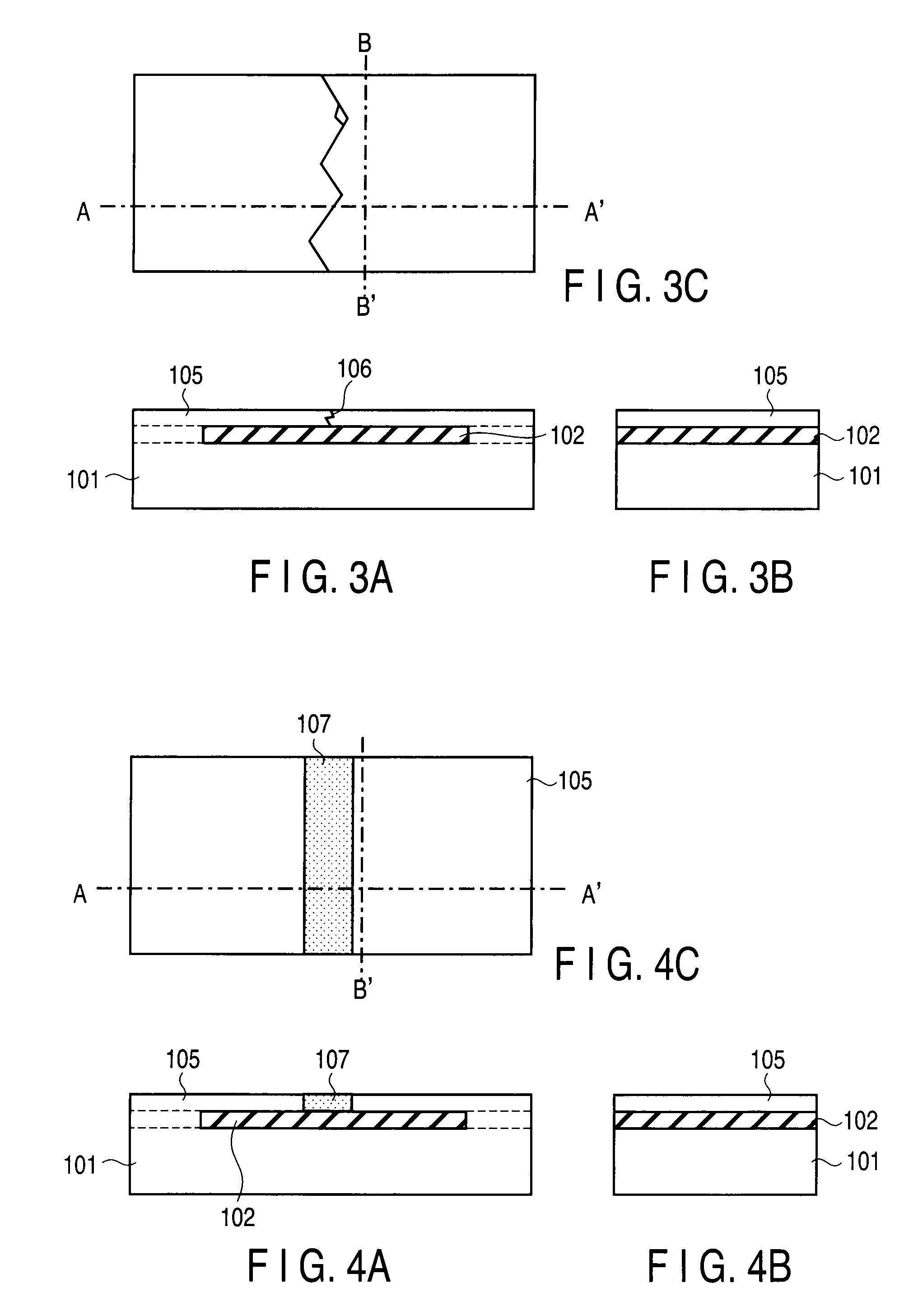Method of manufacturing semiconductor storage device
a technology of semiconductor storage and manufacturing method, which is applied in the direction of semiconductor devices, basic electric elements, electrical appliances, etc., can solve the problems of difficult to form a silicon layer having a large area, the memory cell transistors to malfunction, and the variation between cells
- Summary
- Abstract
- Description
- Claims
- Application Information
AI Technical Summary
Problems solved by technology
Method used
Image
Examples
first embodiment
[0043]The first embodiment proposes a method of reducing defects of memory cells, by achieving position control of crystal mismatch surfaces of an SOI crystal layer, which causes problems in manufacturing an SOI structure by solid-phase crystallization.
[0044]A method of manufacturing memory cell portions according to the first embodiment is explained below with reference to FIGS. 1A to 1C to FIGS. 10A and 10B. In FIGS. 1A to 1C to 10A and 10B, A is a cross-sectional view taken in a channel length direction (bit line direction), B is a cross-sectional view taken in a channel width direction (word line direction), and C is a plan view. A illustrates a cross section taken along line A-A′ of plan view C, and B illustrates a cross section taken along line B-B′ of plan view C.
[0045]First, as illustrated in FIGS. 1A to 1C, a silicon oxide film (embedded insulating film) 102 having a thickness of 50 nm is formed on a surface of a p-type single-crystal silicon substrate 101. Then, a part of ...
second embodiment
[0064]The second embodiment provides a method in which portions other than the central portion of the BOX oxide film, where a seam between solid-phase crystallizations from adjacent opening portions is expected to exist, are masked, ion implantation is performed by using oxygen, nitrogen or carbon, and thereafter solid-phase crystallization is performed, to solve the problems of prior art. Thereby, it is possible to control the position of the crystal grain boundary to fall within a region where ions are implanted.
[0065]A method of manufacturing memory cells according to the second embodiment will be explained below with reference to FIGS. 12A to 12C to FIGS. 22A to 22C. In FIGS. 12A to 12C to FIGS. 22A to 22C, A is a cross-sectional view taken in the channel length direction (bit line direction), B is a cross-sectional view taken in the channel width direction (word line direction), and C is a plan view. Further, A illustrates a cross section taken along line A-A′ in plan view C, a...
third embodiment
[0083]Although the method of the second embodiment limits the oxygen implanted region by a resist mask, the method cannot set a width of the region which limits the crystal mismatch surface to be smaller than the width which can be opened by lithography. To solve this problem, in the third embodiment, the width of the opening portions is narrowed by sidewall transfer, and thereby the position where a crystal mismatch surface is formed can be controlled to fall within a region narrower than the minimum processing width of lithography.
[0084]In the third embodiment, as illustrated in FIG. 23A, a silicon oxide film 301 having a thickness of 200 nm is deposited as a mask material on an amorphous silicon film 104, and then the silicon oxide film 301 is patterned. Thereby, a structure having an opening portion having a width of 30 nm is formed. If ion implantation is performed in this state, the same structure as in the second embodiment is achieved.
[0085]Next, as illustrated in FIG. 23B, ...
PUM
 Login to View More
Login to View More Abstract
Description
Claims
Application Information
 Login to View More
Login to View More - R&D
- Intellectual Property
- Life Sciences
- Materials
- Tech Scout
- Unparalleled Data Quality
- Higher Quality Content
- 60% Fewer Hallucinations
Browse by: Latest US Patents, China's latest patents, Technical Efficacy Thesaurus, Application Domain, Technology Topic, Popular Technical Reports.
© 2025 PatSnap. All rights reserved.Legal|Privacy policy|Modern Slavery Act Transparency Statement|Sitemap|About US| Contact US: help@patsnap.com



